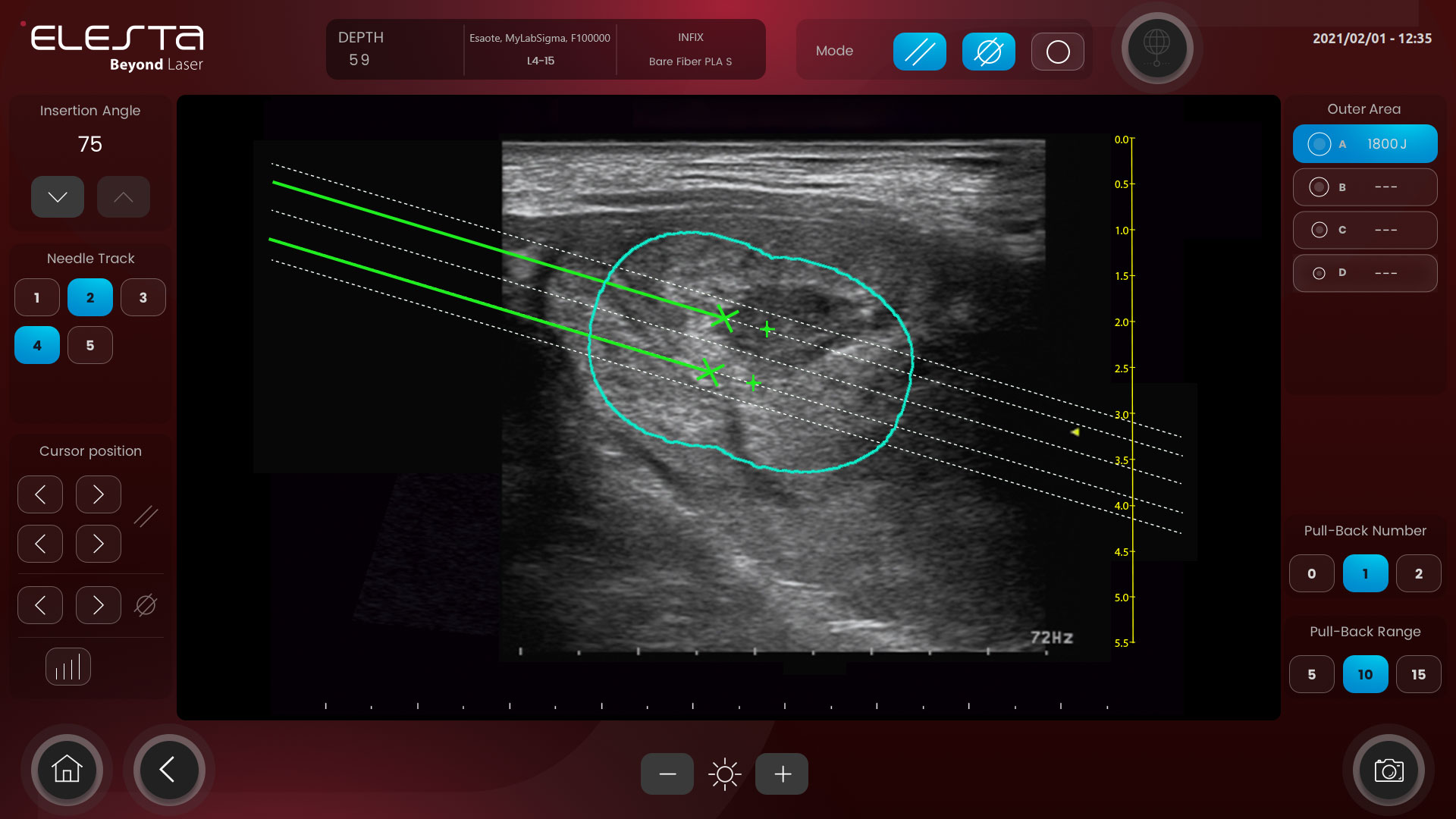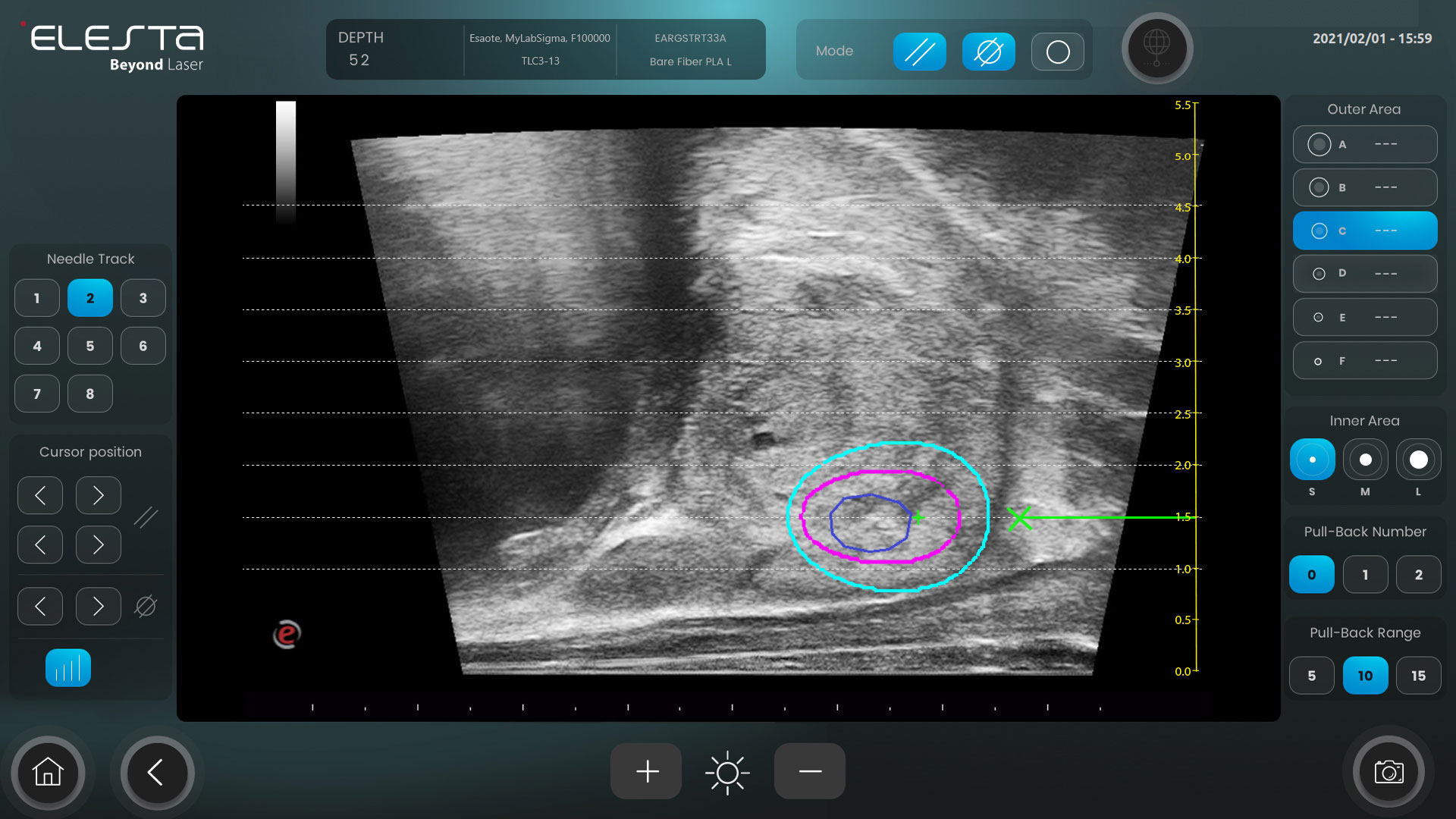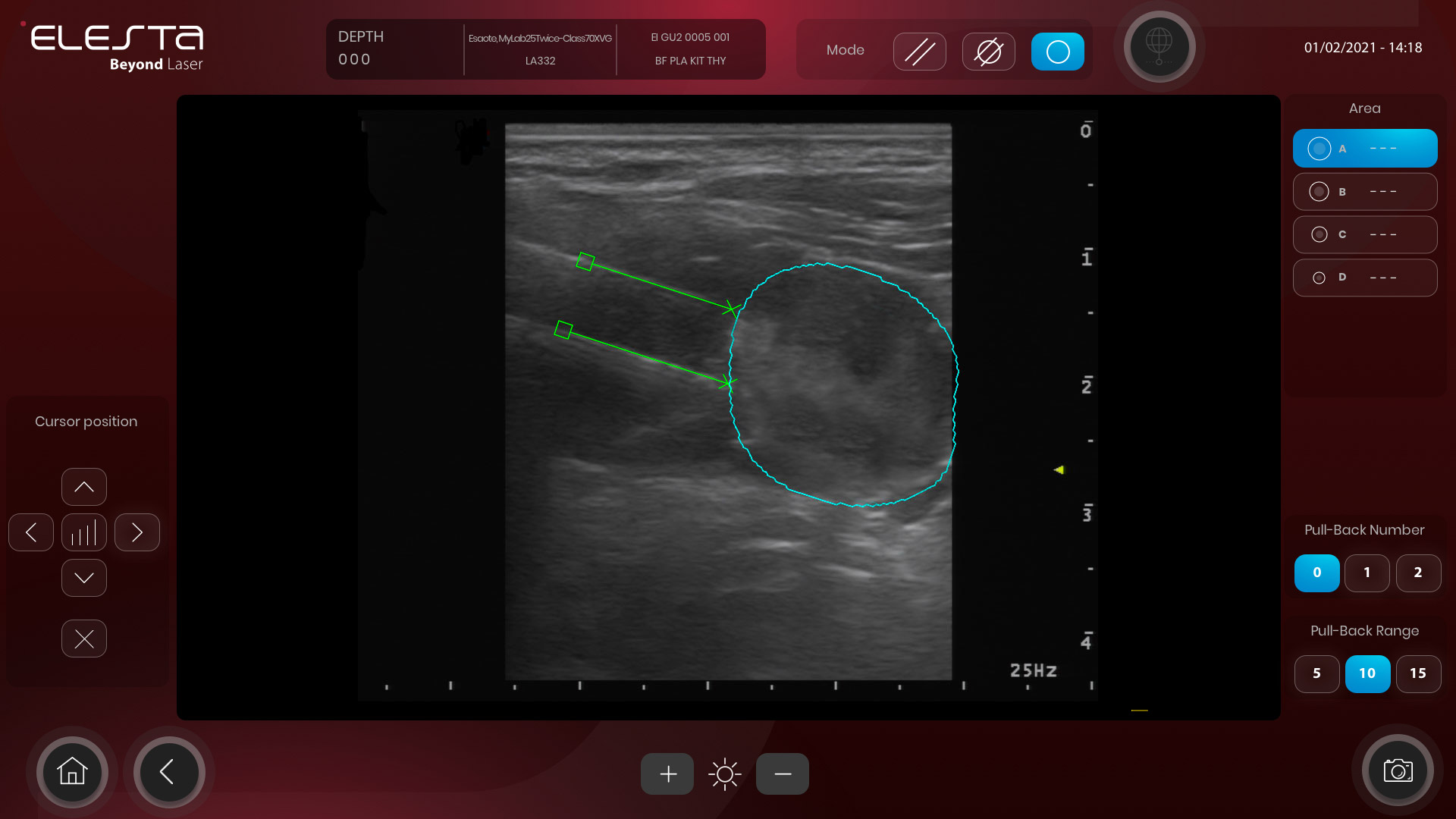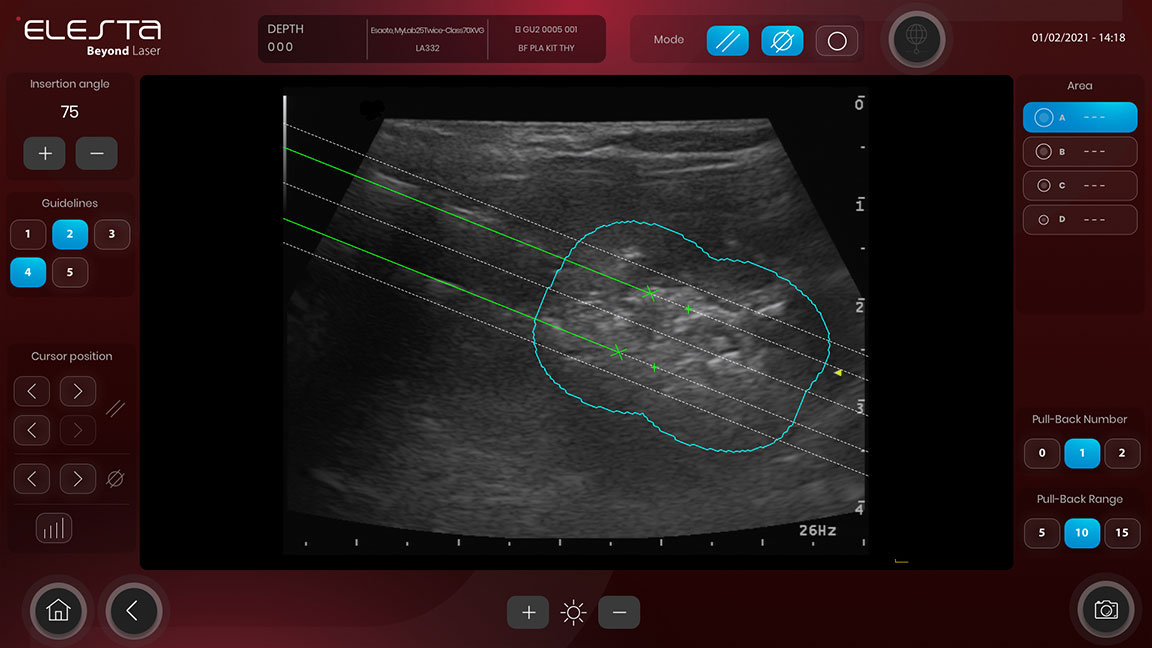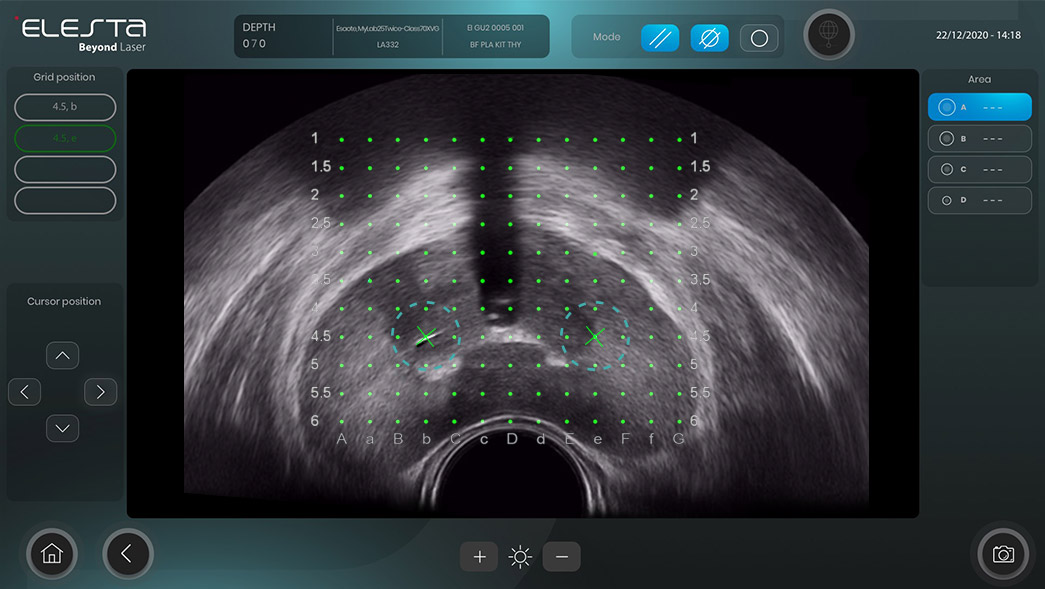
“We are now talking about ablation 2.0, ablation 1.0 is the basic concept underpinning the minimally invasive procedure: put a needle in, use image guidance, burn or freeze the cancerous tissue to destroy it. But ablation 2.0 means that we are focusing more on precision, on margins, and specifically the road to A0 [where all tumour cells are eradicated].”
Stephen Solomon (Chief, Interventional Radiology Service, Memorial Sloan Kettering Cancer Center, New York, USA) – Interventional News, March 18, 2021
One integrated system for multiple applications
EchoLaser EVO offers options for integrating in a single system all the components needed to perform laser thermal ablation procedures on soft tissues in a safe, predictable and reproducible way. It is in fact a system composed by a multi-source laser module for the delivering of laser radiation and a dedicated smart interface which can be paired with the majority of ultrasound (US) systems available on the market for the planning, real-time guidance and verification of the treatment.
System components
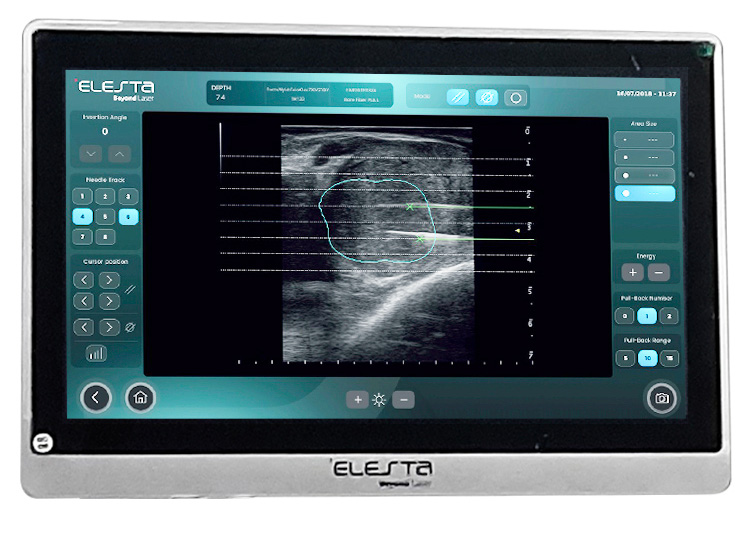
Echolaser Smart Interface (ESI) a dedicated device connected with the video output of the US system, for real-time user assistance in performing the procedure.
ESI Licenses – Dedicated software licenses for the planning and monitoring of the treatment in different clinical applications.
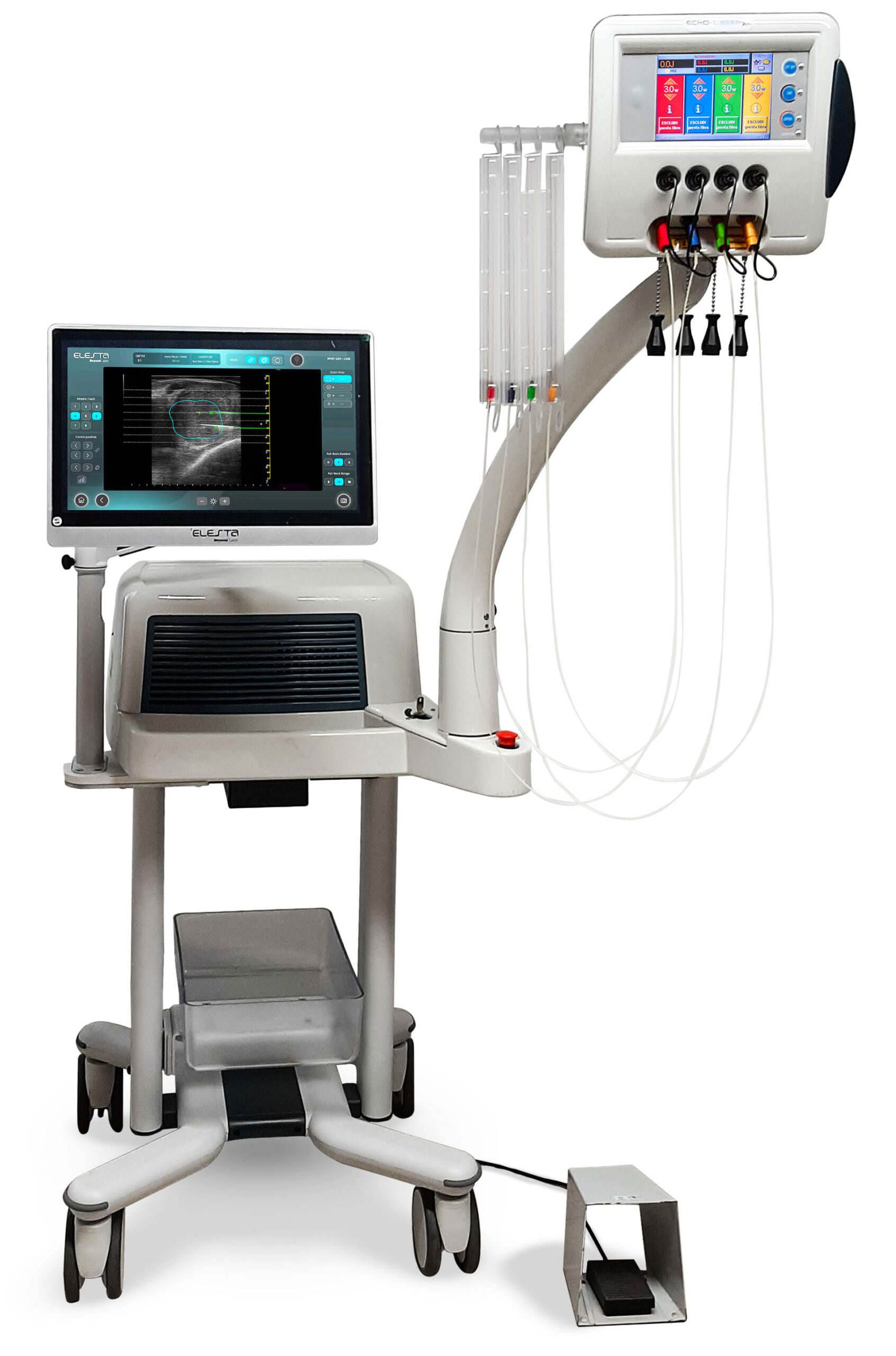
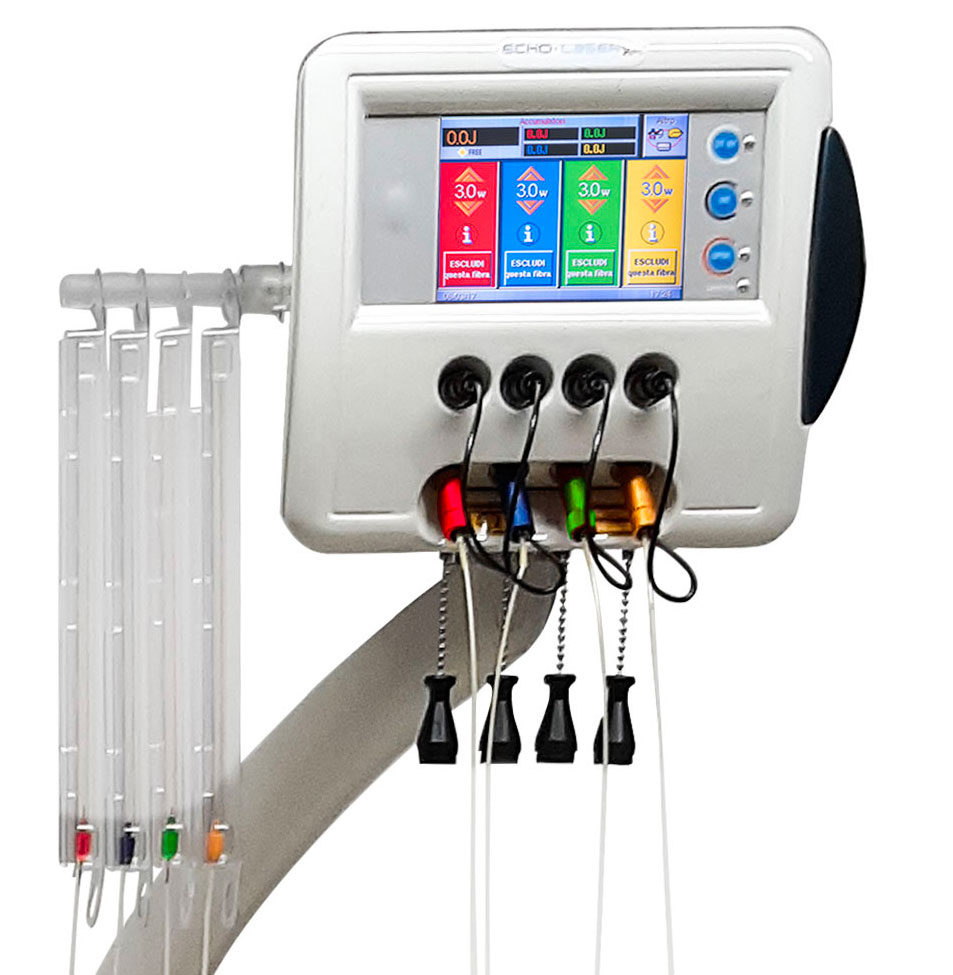
ECHOLASER X4 – a 1064 nm solid state 4-channels laser module for the delivery of laser radiation.
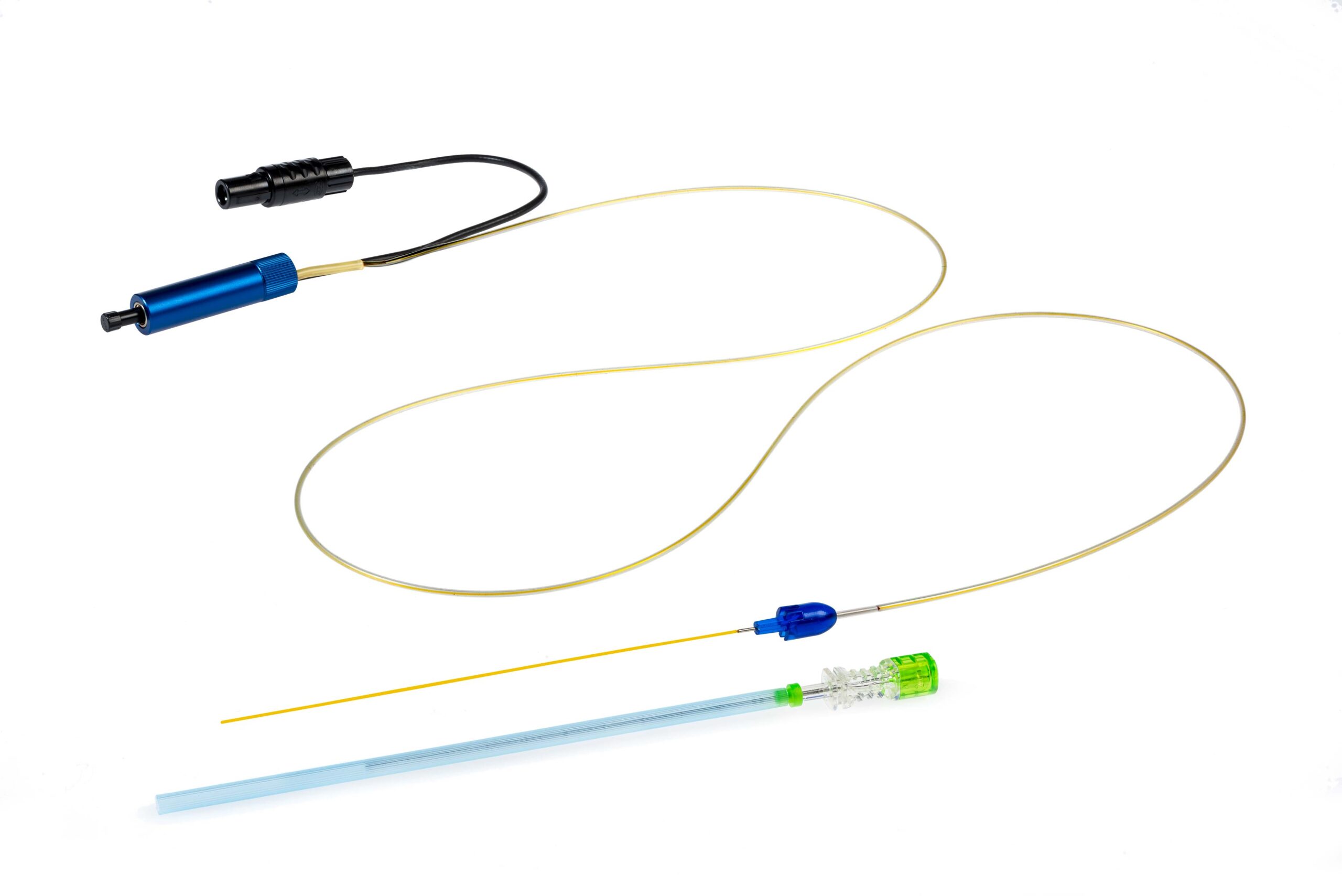
Disposable fiber optics kit (fiber optic + introducer needle) for laser light transmission from the laser source to the tissue to be treated.
Dedicated multi-needle guiding systems that can be mounted on the US probes to aid the user in the fine positioning of the introducer needles.
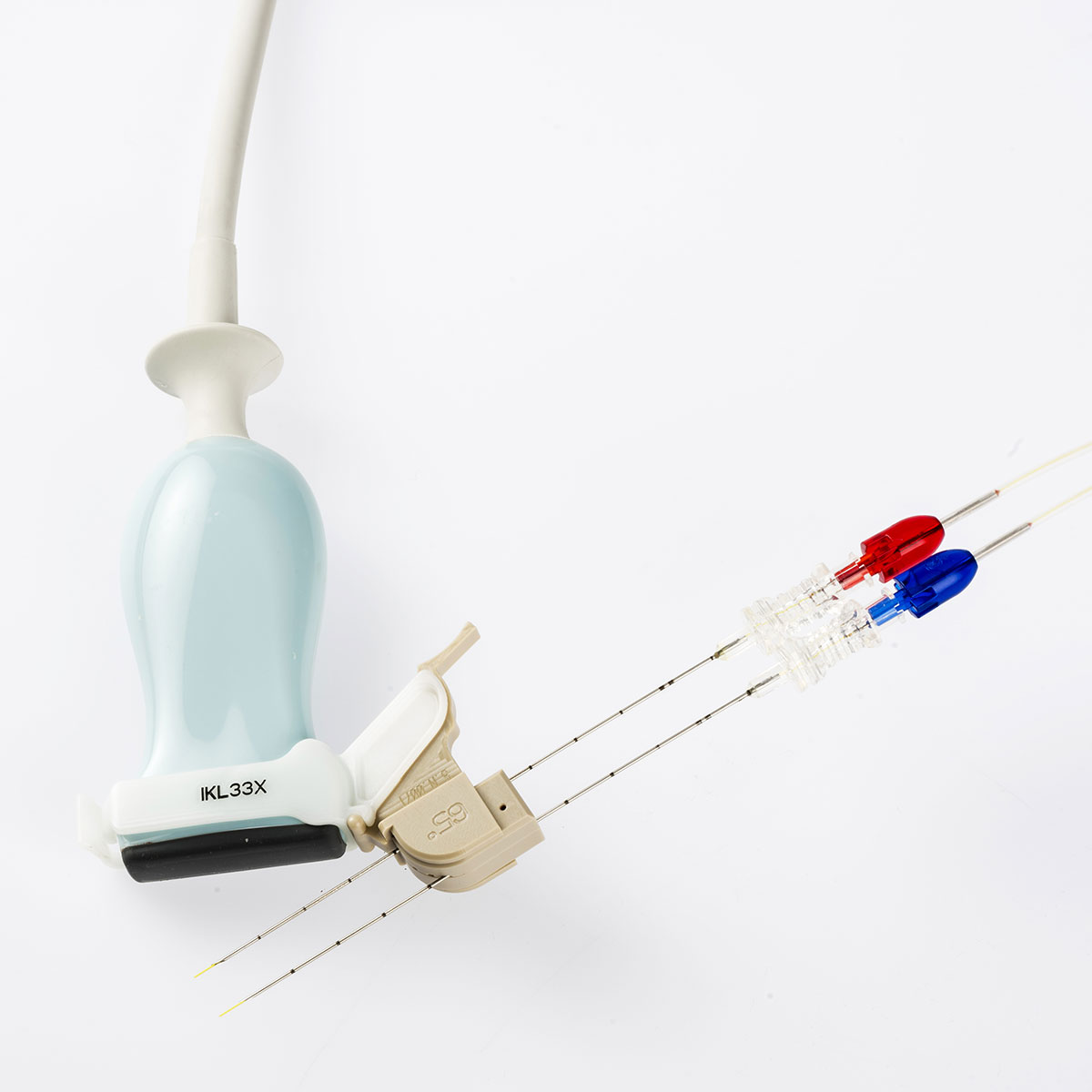
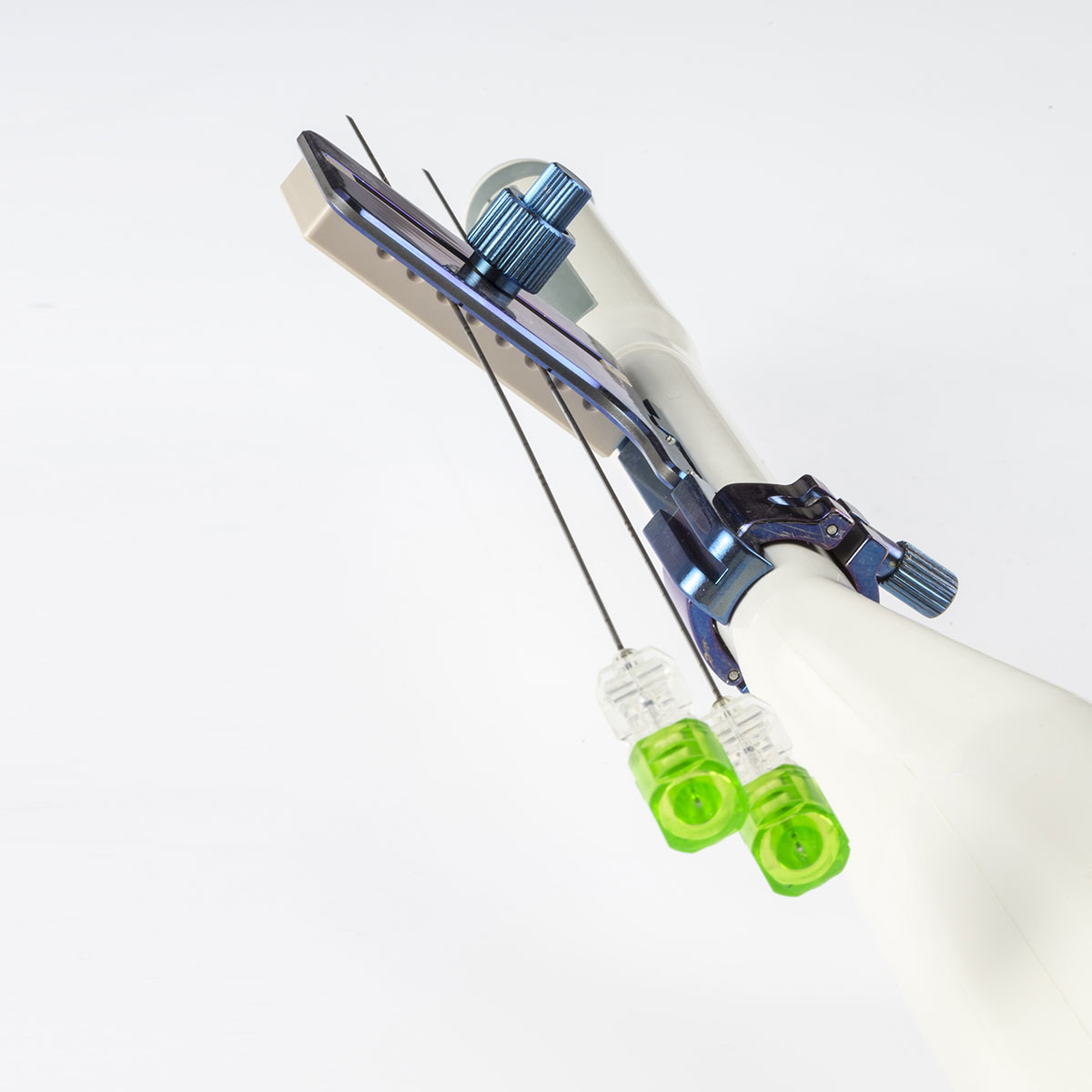
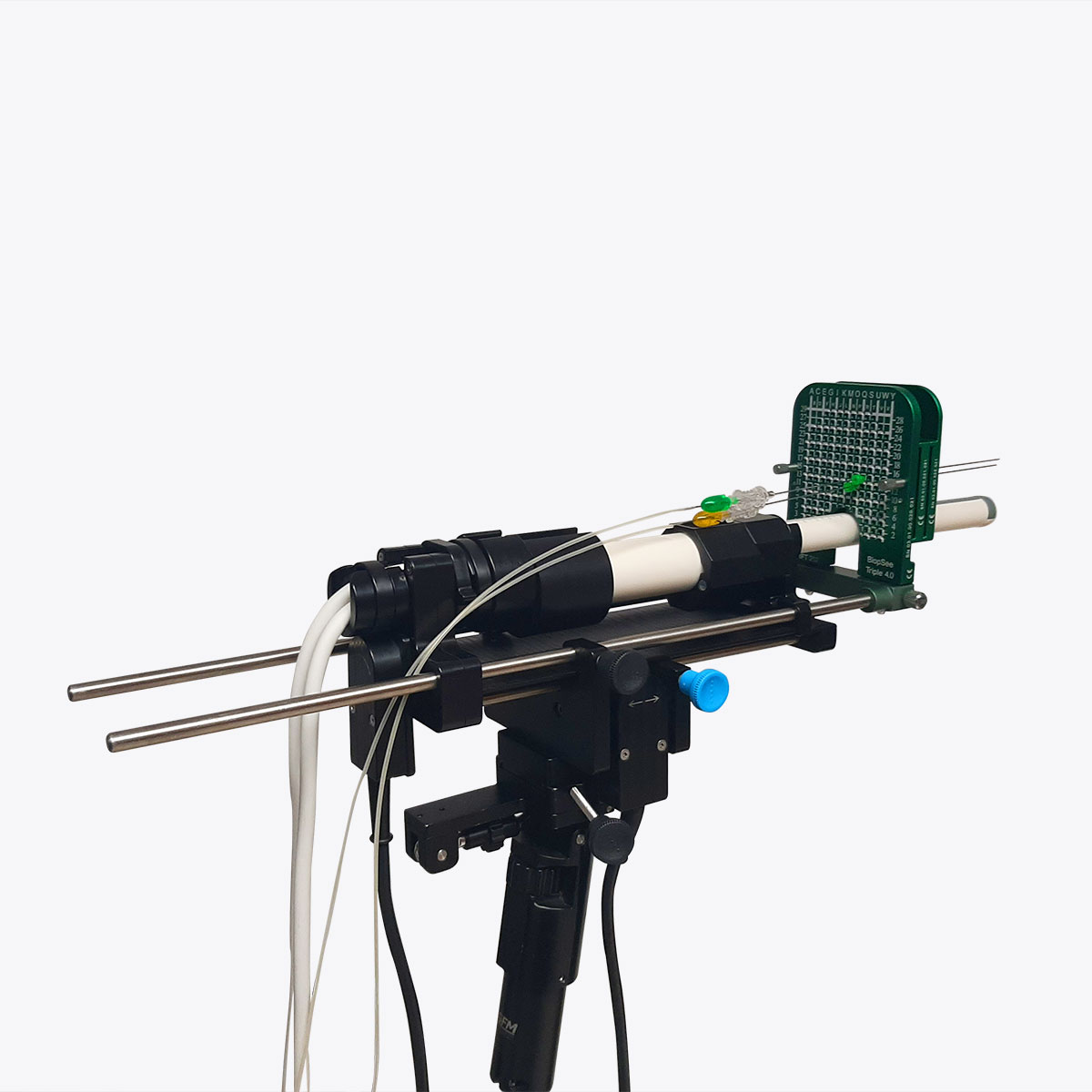
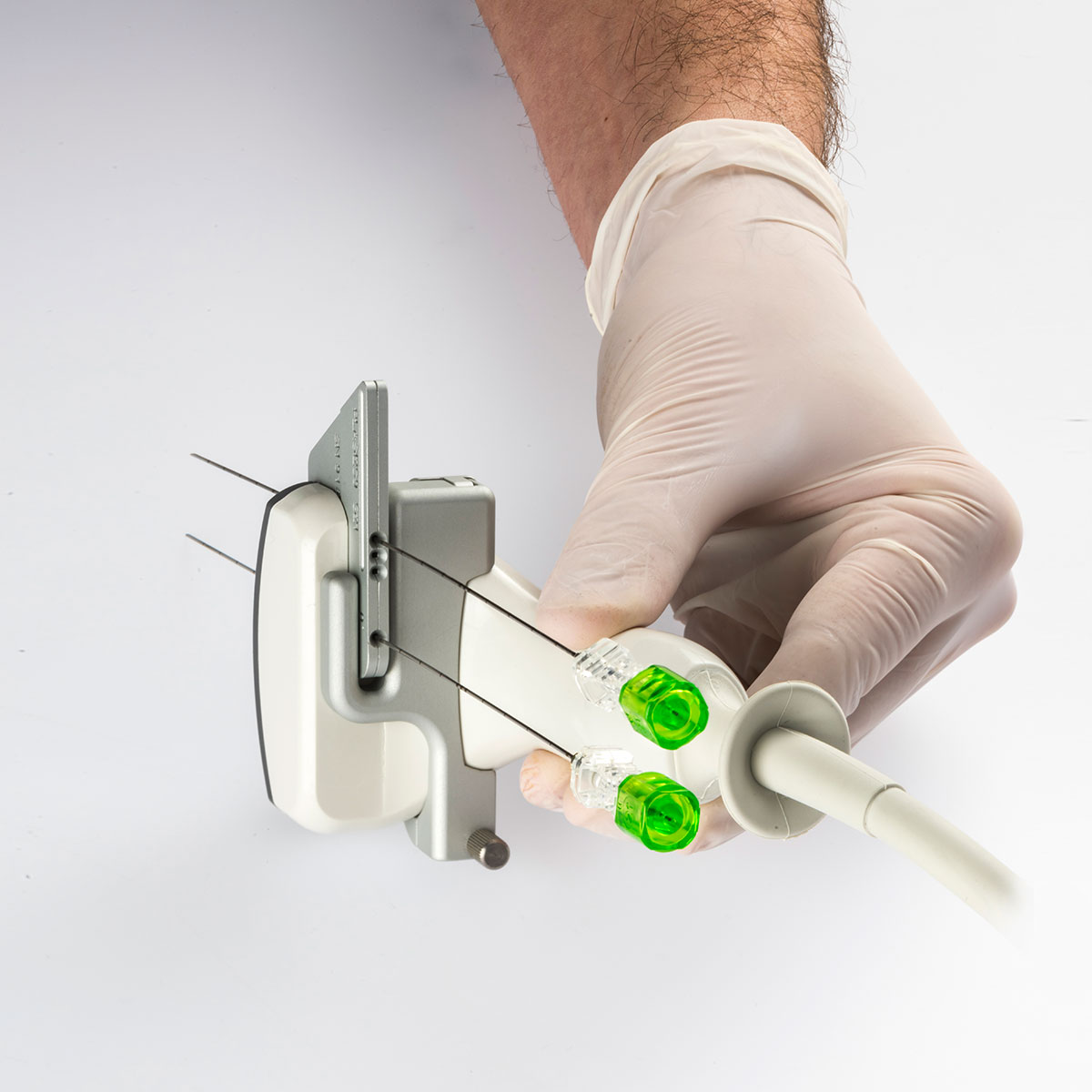
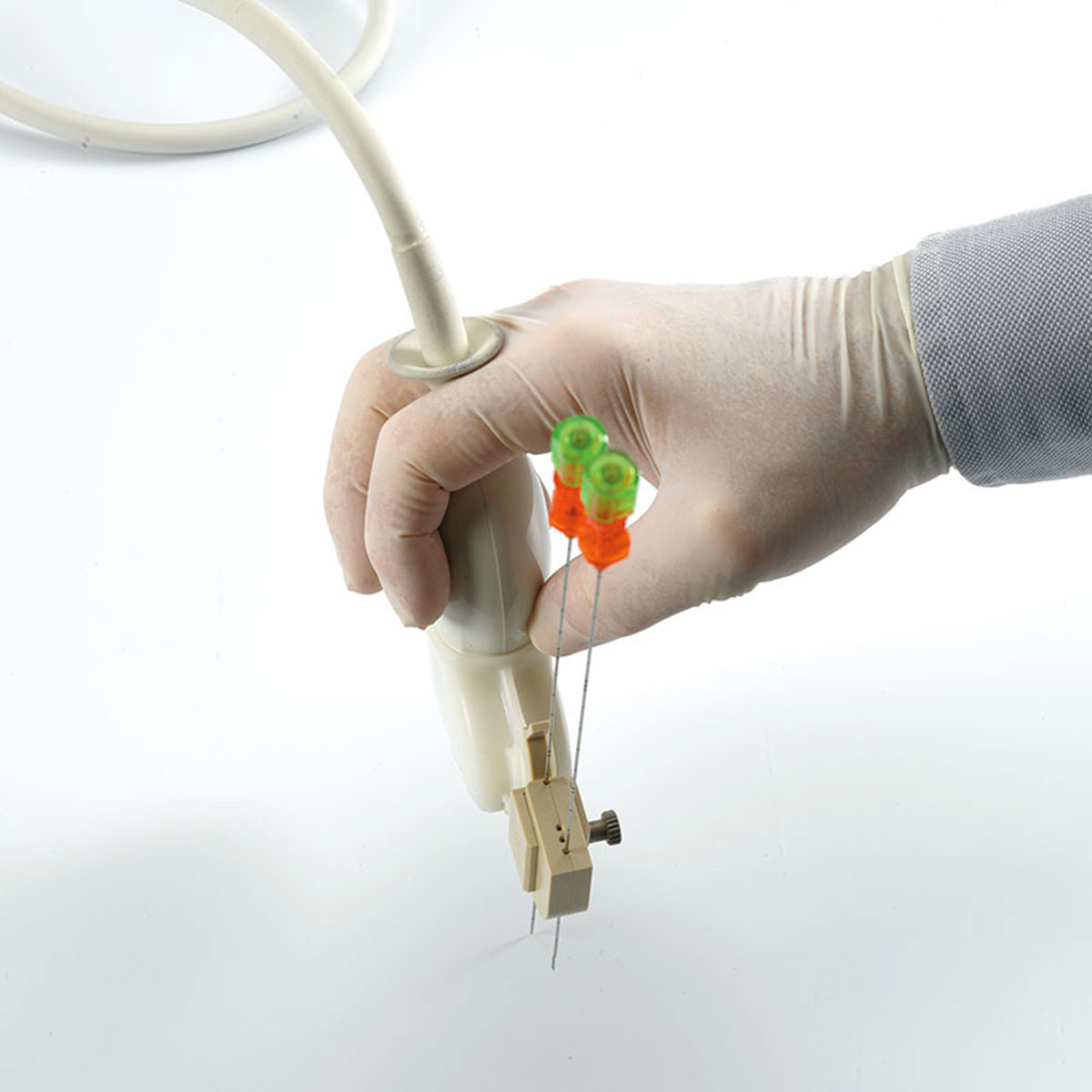
Echolaser Smart Interface (ESI) features
Pre-treatment planning with enhanced lesion targeting
Dedicated pre-treatment planning software aids the operator in determining the most suitable treatment options for each specific clinical case and treatment endpoint: Laser Induced Cyto Reduction (LICR) to address benign lesions or complete necrosis for the treatment of malignant lesions.
LICR applications – Benign lesions The aim of the treatment is to reduce the amount of excess tissue in benign lesions, i.e. Benign Thyroid Nodules (BTN) or Benign Prostatic Hyperplasia (BPH). In such applications ESI software allows the operator to set treatment parameters (needle insertion angle, number and spacing of fibers, pullback etc.), reproducing in real-time needles insertion trajectories and a closed perimeter, representing the safety distances to be maintained in order to spare anatomical structures which need to be preserved from the effect of thermal treatment. The correct treatment planning is achieved by enlarging the displayed perimeter as much as possible, without exiting the lump or including anatomical structures not intended to be treated.
Complete necrosis applications – Malignant lesions The aim of the treatment is the complete necrosis of the tissue. In such applications ESI software adds to the tools provided for the planning of LICR treatments, an additional inner area useful to center the target lesion as a viewfinder for the fine positioning of the introducer needles. The correct treatment planning is achieved by including in the inner area the targeted tumour itself plus the desired extra ablation area (safety margin), while respecting the distances from critical anatomical structures. If one of these conditions is not satisfied, needle repositioning should be considered.
Planning verification
This feature allows the physician to verify needles placement in the target tissue. It is a useful tool to double check the real applicators positioning before starting the ablation procedures.
Verification of needle positioning for the treatment of a BTN
Template grid coupling
Dedicated software for BPH and PCa procedures shows needles insertion points available using biplanar ultrasound probes template grids. The operator can thus place multiple applicators inside the prostate lobes, easily reaching the optimal position to perform the thermal treatment.
Needle positioning in the prostate lobes using the template grid
Remote Assistance
The operator can activate the remote control modality to share in real-time the Echolaser Smart Interface screen with experienced colleagues, to share and discuss the planning of the thermal ablation procedure during new users’ learning phase or to seek expert advice for complex clinical cases. This modality can also be used for technical remote support from Elesta application specialists.
Remote support in performing planning phases of the thermal ablation treatment
Software information:
ESI was developed using open source libraries taken from The QT Company.
Elesta SpA makes the revised version of such software publicly available in compliance with open source software rules.
If interested to receive our software, place a request to Elesta SpA using contact details available here.
Shortly a link for instant download will go live.





